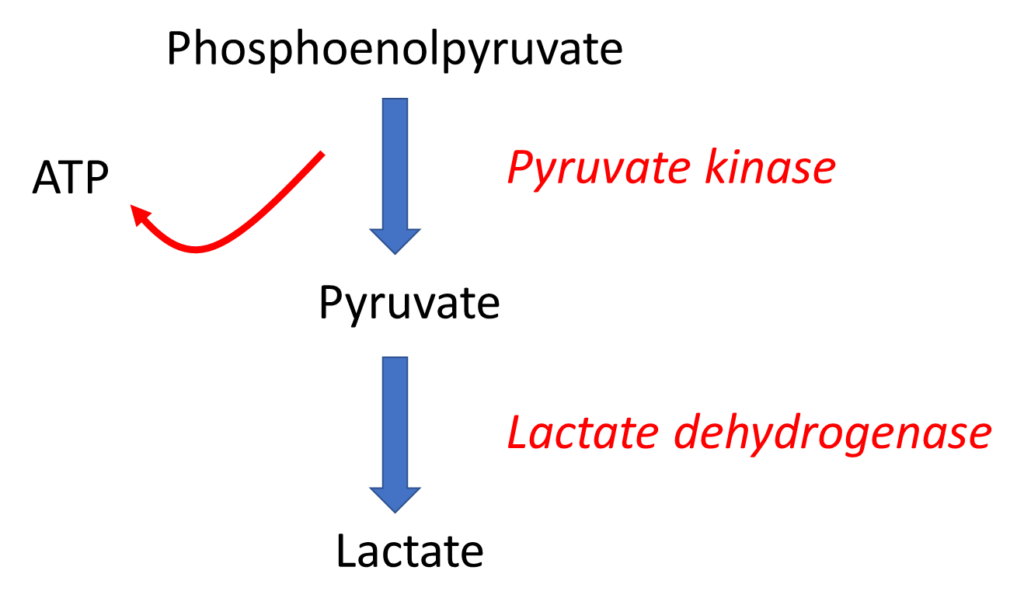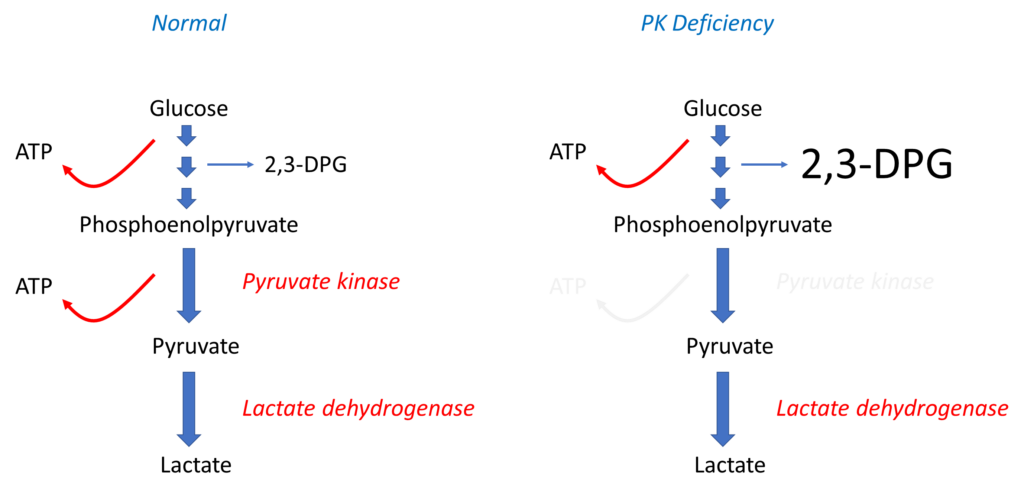What’s in a name?
What is pyruvate kinase (PK) (one answer)?
Pyruvate kinase is necessary for generating (one answer):

Pyruvate kinase (PK) catalyzes the conversion of phosphoenolpyruvate to pyruvate in the glycolytic pathway, resulting in ATP production. ATP is necessary for maintaining the structural and functional integrity of red blood cells during their lifespan of 100 to 120 days.
Abnormal or deficient PK enzyme activity results in inadequate ATP production with consequent:
- Loss of membrane plasticity
- Cellular dehydration
- Premature destruction of red blood cells in the spleen or liver
The following schematics show the glycolytic pathway under normal conditions and in the setting of pyruvate kinase (PK) deficiency.

Levels of 2,3-DPG are elevated in patients with PK deficiency. Which way does the oxygen dissociation curve shift?
Increased G6PD causes the oxygen dissociation (OCD) curve to shift to the right:
Which of the following statement best describes the shift of the OCD curve to the right (one answer)?
As a result of the increased 2,3 DPG levels, patients are:

Can you think of another medical condition that is associated with a shift of the OCD curve to the right?
Click for AnswerOCD, oxygen dissociation curve

Which way does the OCD curve shift when you climb Mt. Everest?
Click for AnswerWe will discuss pyruvate kinase (PK) deficiency in more detail in About the Condition, but several principles are worth mentioning now as they relate to our patient:
- As in our case, splenectomy is often performed in patients with PK deficiency.
- Splenectomy in patients with PK deficiency is associated with an improvement in anemia, but a paradoxical increase in reticulocyte count. This may explain our patient’s profound reticulocytosis.
- Transfusions are common in children with PK deficiency (87% of patients younger than 18 years of age having received at least one transfusion in their lifetime), and therefore patients are at risk for iron overload (approximately 50% of children younger than 18 years of age have iron overload). This explains why our patient was treated with iron chelation therapy.
- Evidence of hemolysis and risk of gallstones often persist after splenectomy, as shown in our patient.
- Splenectomy is associated with infectious and thrombotic risks. These risks persist lifelong after splenectomy, and are an important reason to follow our patient throughout adulthood.
In the next section, we will consider post-splenectomy complications in more detail.

